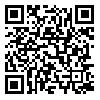Volume 24, Issue 1 (March 2020)
Physiol Pharmacol 2020, 24(1): 34-45 |
Back to browse issues page
Download citation:
BibTeX | RIS | EndNote | Medlars | ProCite | Reference Manager | RefWorks
Send citation to:



BibTeX | RIS | EndNote | Medlars | ProCite | Reference Manager | RefWorks
Send citation to:
Ghorbani M, Shahabi P, Karimi P, Javan M, Bani S, Hoseini S, et al . Sub-threshold electrical stimulation improves wingless-type3 and eukaryotic initiation factor-2α expression in the presence of exogenous astrocyte in the rat model of spinal cord injury. Physiol Pharmacol 2020; 24 (1) :34-45
URL: http://ppj.phypha.ir/article-1-1523-en.html
URL: http://ppj.phypha.ir/article-1-1523-en.html
Meysam Ghorbani 
 , Parviz Shahabi
, Parviz Shahabi 

 , Pouran Karimi
, Pouran Karimi 
 , Mohammad Javan
, Mohammad Javan 
 , Soheila Bani
, Soheila Bani 
 , Saba Hoseini
, Saba Hoseini 
 , Hamid Soltani-Zangbar
, Hamid Soltani-Zangbar 
 , Behnaz Sadeghzadeh-Oskouei
, Behnaz Sadeghzadeh-Oskouei 


 , Parviz Shahabi
, Parviz Shahabi 

 , Pouran Karimi
, Pouran Karimi 
 , Mohammad Javan
, Mohammad Javan 
 , Soheila Bani
, Soheila Bani 
 , Saba Hoseini
, Saba Hoseini 
 , Hamid Soltani-Zangbar
, Hamid Soltani-Zangbar 
 , Behnaz Sadeghzadeh-Oskouei
, Behnaz Sadeghzadeh-Oskouei 

Abstract: (2742 Views)
Introduction: Spinal cord injury (SCI) is a condition which can lead to permanent loss of neurons, glial and precursor cells. According to the positive influences of electrical stimulation in the neurogenesis, we hypothesized that sub-threshold electrical stimulation in the presence of exogenous astrocyte may trigger the differential regulation of wingless-type3 (Wnt-3) and eukaryotic initiation factor-2α (eIF2α) mediators in spinal cord injured rats. Methods: Forty male Wistar rats (weighing 250-280g) were randomly divided into four groups: sham, SCI, SCI+astrocyte and SCI+astrocyte which followed by electrical stimulation. We evaluated the glial fibrillary acidic protein (GFAP), doublecortin, Wnt-3 and eIF2α proteins by immunofluorescence and immunoblotting techniques. Results: The results show that expression of Wnt-3 and eIF2α proteins significantly enhanced after 14 days in the electrical stimulation+ SCI+astrocyte group in comparison with SCI and SCI+astrocyte groups. Also, the expression of GFAP cells was significantly increased after 14 days by electrical stimulation compared with other groups. Electrical stimulation had no effect on expression of doublecortin after 14 days. Conclusion: This survey demonstrates that sub-threshold electrical stimulation up-regulates Wnt-3 and eIF2α mediators. Also, GFAP marker expression has been increased in animals subjected to electrical stimulation. But there are no evidences based on doublecortin expression as a neurogenesis biomarker.
Type of Manuscript: Experimental research article |
Subject:
Neurophysiology/Pharmacology
| Rights and permissions | |
 |
This work is licensed under a Creative Commons Attribution-NonCommercial 4.0 International License. |






